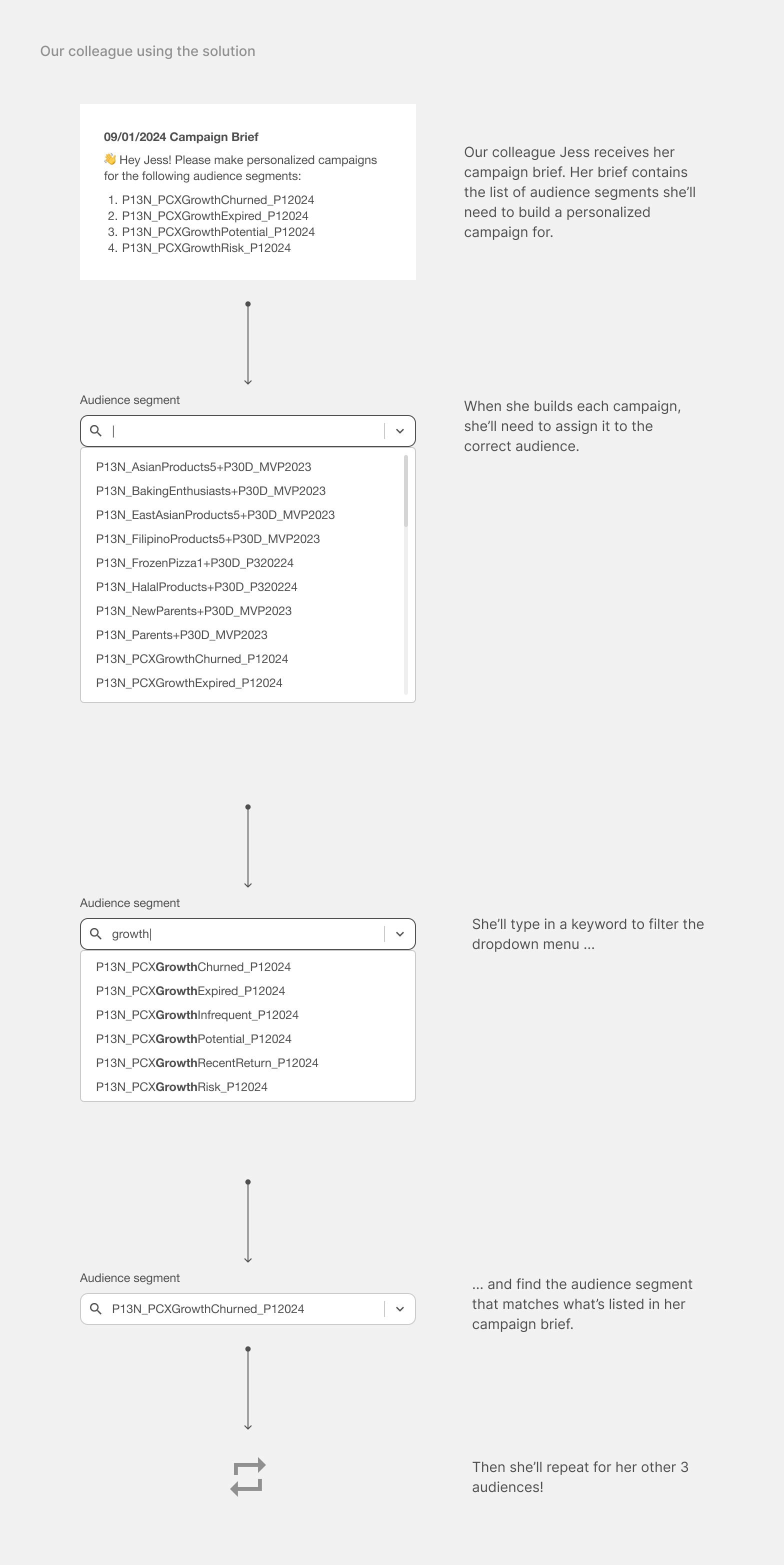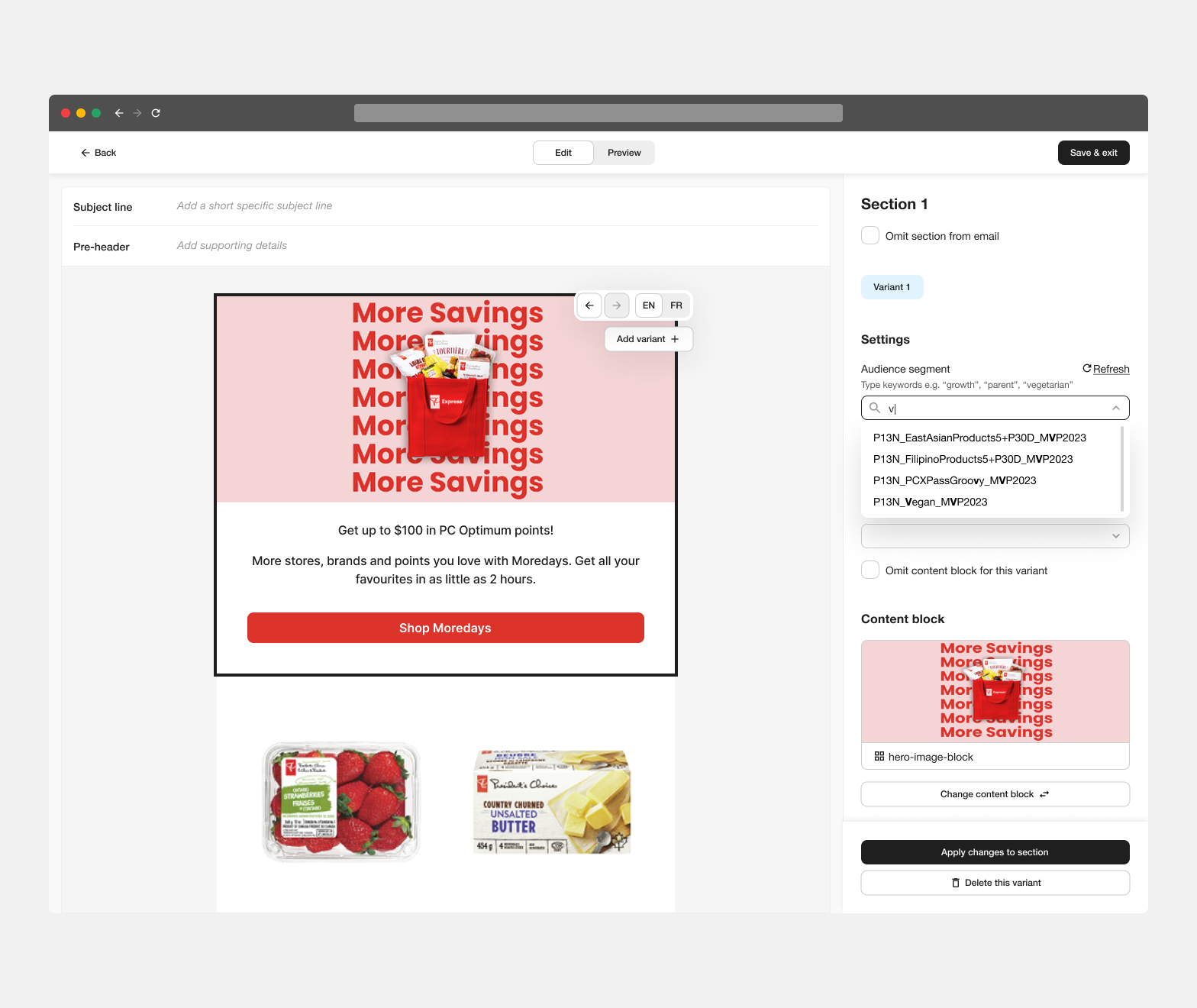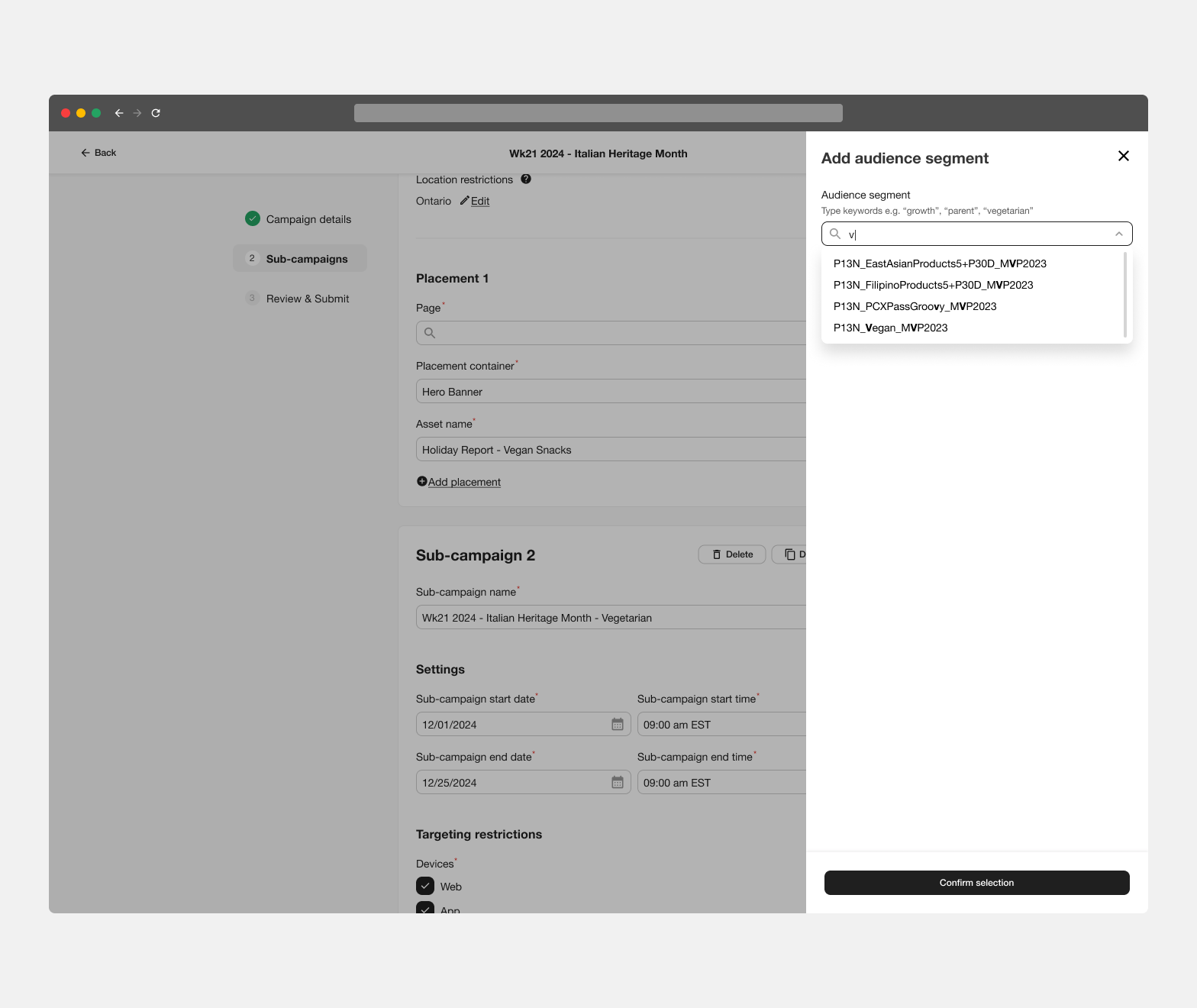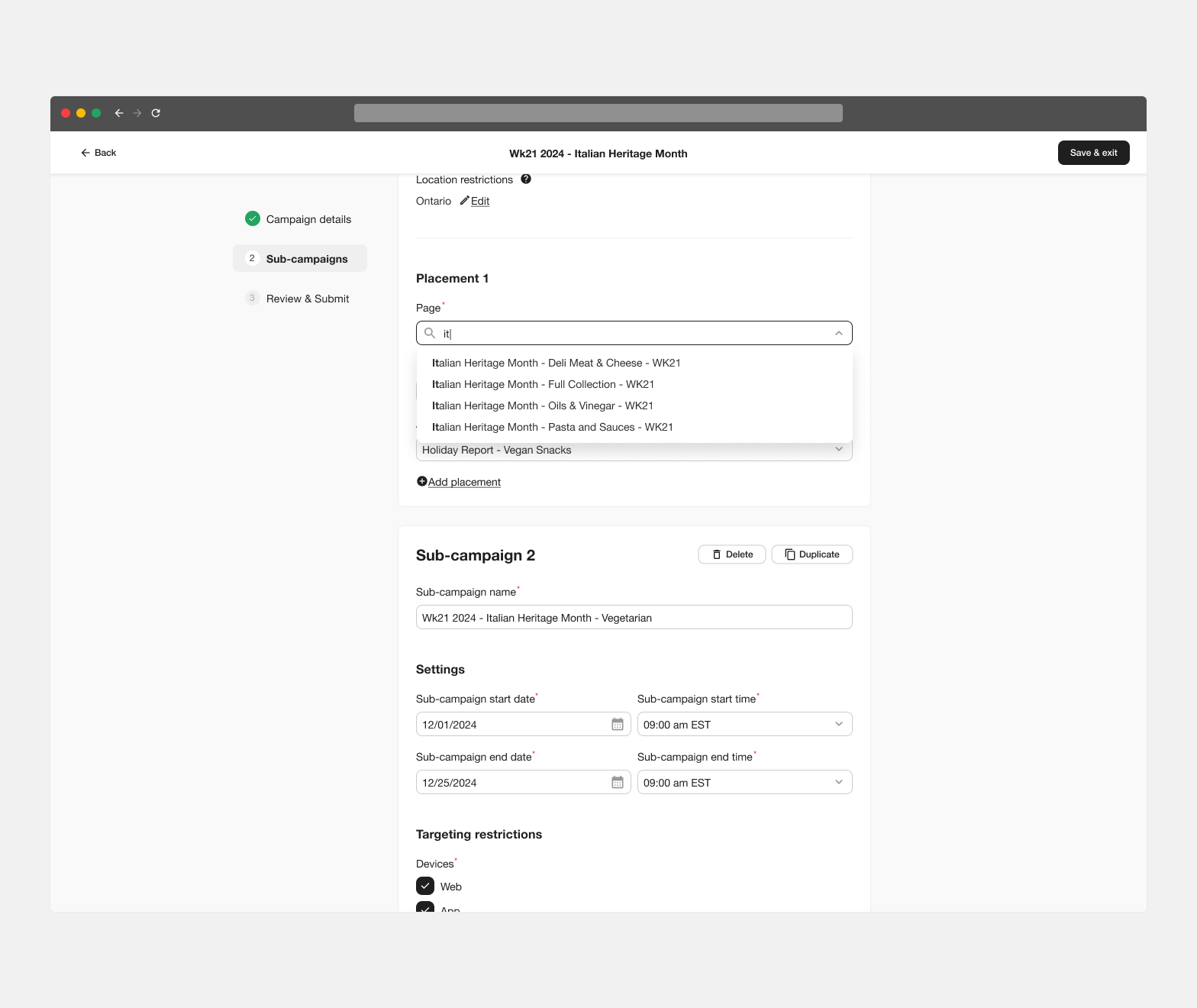
Enabling efficient e-comm campaign production with searchable select menus
Role
Associate product designer
Collaborators
Senior product designer
Product manager
FE engineers
Duration
2 week sprint
During a 2 week sprint at Loblaw Digital, I defined searchable select menu interactions for our internal Campaign Manager, reducing production time and enabling the production of personalized campaigns at scale. In one year, the difference in revenue between personalized campaigns built in Campaign Manager and non-personalized campaigns was +5.8M.
My role
In January 2024, I joined the personalization team at Loblaw Digital. Our team was responsible for our internal Campaign Manager, a campaign management tool used by our colleagues to produce personalized campaigns for 1M+ customers across Canada. When I joined, Campaign Manager had just launched.
Problem
-
Because unique content must be created for every audience segment, personalization requires more content creation.
-
Menus on our interface connected to our content databases were growing, and items became more and more difficult for colleagues to find.
-
Personalized campaign production is repetitive. Colleagues reported frustration because they had to repeatedly find items buried within long menus.
Business impact
Why was this problem important to solve?
In order for personalized campaign production to drive convergence & revenue, it needs to scale. To scale successfully, menus in our UI will only get longer. To increase colleague efficiency and satisfaction, it was an important problem to solve at that point in time.
Validating the solution
Why was this an effective search solution for us?
-
A searchable select menu was a lower effort alternative to typeahead search
-
Task-analysis validated that our colleagues only need to filter our menus after typing a keyword, but providing additional search suggestions was not necessary

Reusability
Once the search pattern was defined and built into our codebase, it could be reused across the product.



Learnings
Reflections from this 2-week sprint
Search patterns for your product can differ from the search patterns you know
Search is something I interact with every day, but it had to be considered in the context of our product. What is the max-height of the menu? How should we handle case-sensitivity? Solutions were found by thinking about how our colleagues work and feasability had to be validated by the tech team.
An activity like this is not isolated from user-centred design
It was less intuitive to foresee how user research had a role in this activity. However, task analysis was essential to validating the search solution was effective.